Patients Are Now Consumers, and 81% Are Tired of Your Waiting Room
Today’s healthcare patient is more empowered than ever before when it comes to things like accessing their own health data through personal wearable devices, choosing providers, and interacting with healthcare professionals through patient portals and telemedicine platforms.
All of these changes have contributed to the trend of healthcare consumerism: A shift that benefits the patient by giving them more power in selecting their healthcare provider. This trend also forces providers to consider the patient experience more than ever before, as practices are now expected to market themselves more effectively to bring in new patients and keep existing patients.
To help medical practices figure out how best to adapt to this new patient-driven world, we surveyed 1,001 adults in the U.S. who have visited a healthcare provider at least once in the past three years to learn about their experiences with in-person visits, telemedicine, and the use of certain healthcare tools like patient portals.*
Knowing what patients’ top complaints are can ensure your practice is able to avoid such pitfalls in order to provide excellent service and care that will keep patients loyal.
Key findings
Amount of time spent waiting (49%) is the top complaint for in-person medical appointments, followed by issues related to getting to the appointment (32%) and scheduling appointments (31%).
81% of patients missed between one and four hours of work for their most recent in-person medical appointment, compared to 71% of patients who said they missed less than one hour of work for their last telemedicine appointment.
Over half (56%) of patients say a negative experience with a doctor has led them to find a different healthcare provider; 30% have done this more than once.
64% of patients have put off a visit to the doctor to avoid dealing with the hassle of a healthcare appointment.
Patients see going to the doctor as a hassle—but providers can still improve their experiences
Going to the doctor is never going to be anyone’s favorite activity. If you’re sitting in a medical waiting room, it means you or someone you know is sick, which is an inherently frustrating experience.
However, that doesn’t mean providers are helpless when it comes to ensuring patients have a positive experience at their practices. In fact, with the move toward consummerized healthcare, many would say doctors now have a duty to do that very thing. But there’s a lot of work to be done.
Most patients don’t feel a sense of loyalty to their doctors. In fact, our survey found that a majority of patients have sought a new provider after a negative experience.
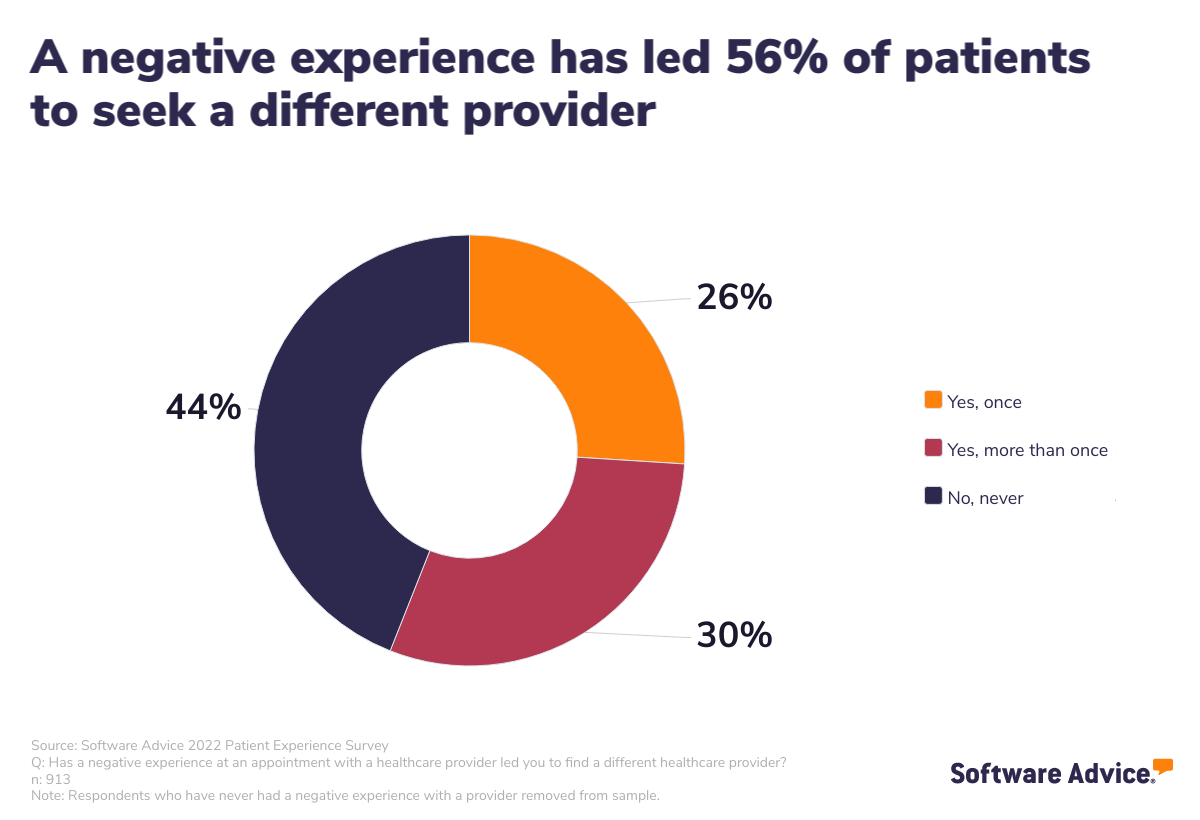
This serves to highlight the stakes at hand: Providers must now consider customer service a part of their job, or risk losing it.
And the best place to start is understanding patients' biggest pain points.
The waiting room is nobody’s favorite place
In surveying respondents who had recent experiences with in-person medical appointments, one major theme quickly emerged: Going to the doctor is time-consuming.
Nearly a third of patients (32%) say commute-related issues are a top pain point for in-person medical appointments—including everything from dealing with traffic and parking to having to worry about public transit.
Another quarter of patients (25%) say their provider seemed rushed during their consultation, showing that time management is an issue that negatively impacts both patients and providers.
But the biggest pain point, by a wide margin, is the amount of time spent waiting for in-person appointments.
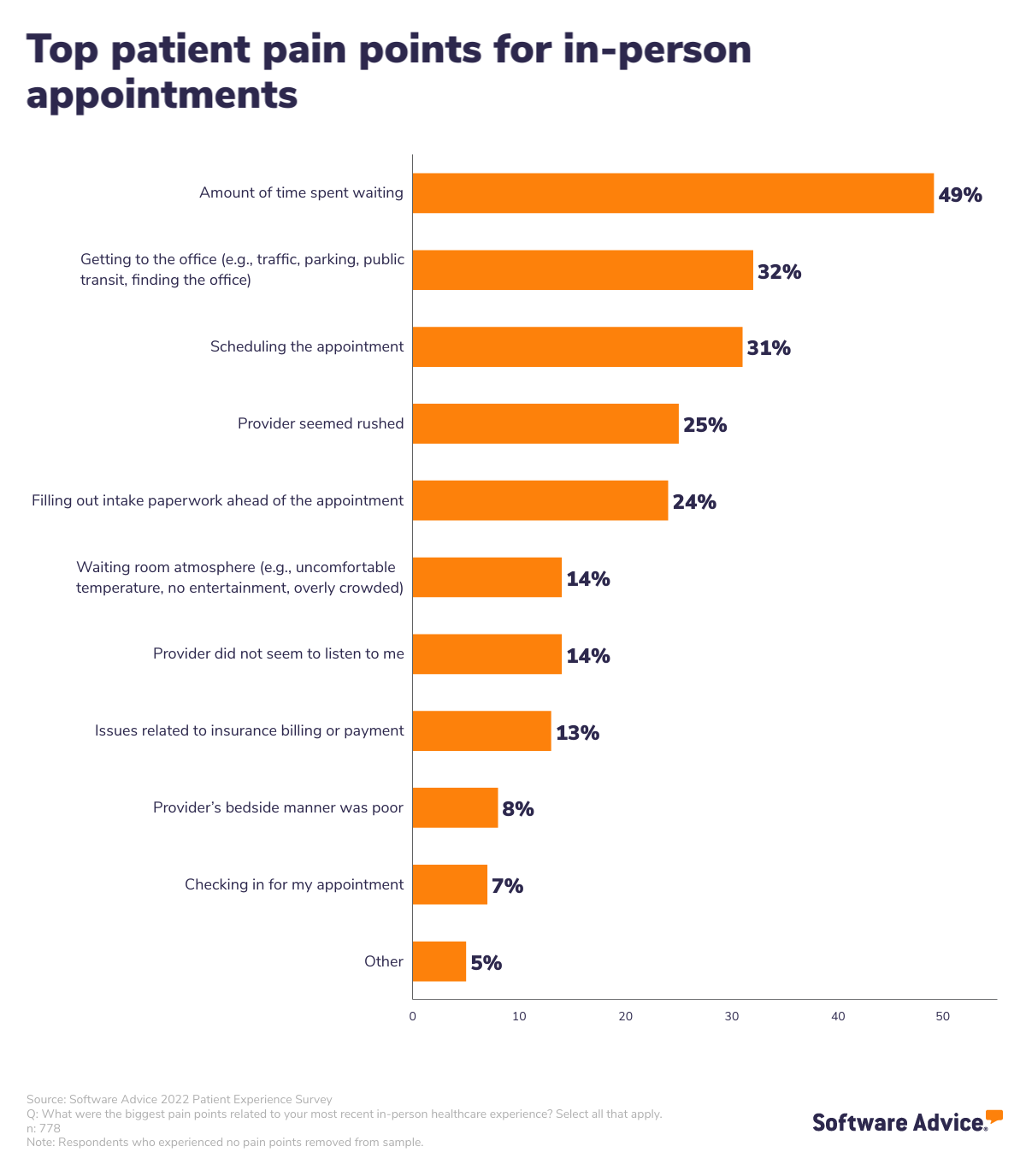
This push and pull between patients spending time in a waiting room and providers running through consultations at warp speed came up again when we asked respondents to estimate how many minutes they spent with the provider during their last in-person appointment.
Over a third say they spent 10 minutes or fewer with their provider, and nearly half only received between 10 and 20 minutes of care.
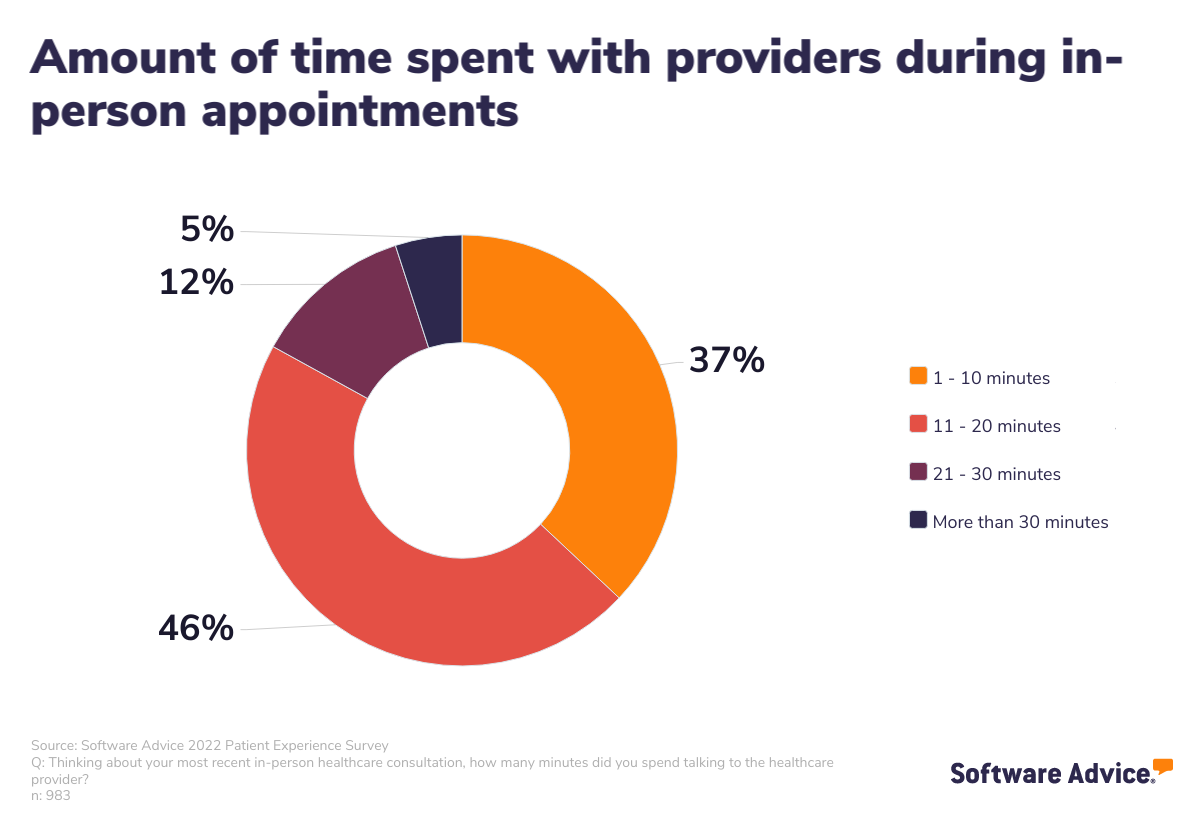
This data becomes even more compelling when you consider that most patients are forced to take between one and three hours off from work in order to attend in-person medical appointments.
At most, patients are only seeing doctors for one-fifth of the time they take off work to do so, the consequences of which include:
Patients don’t feel their time is valued by healthcare providers
Patients will not see the time and effort as worthwhile from a financial standpoint
Patients can seek other providers or put off care entirely
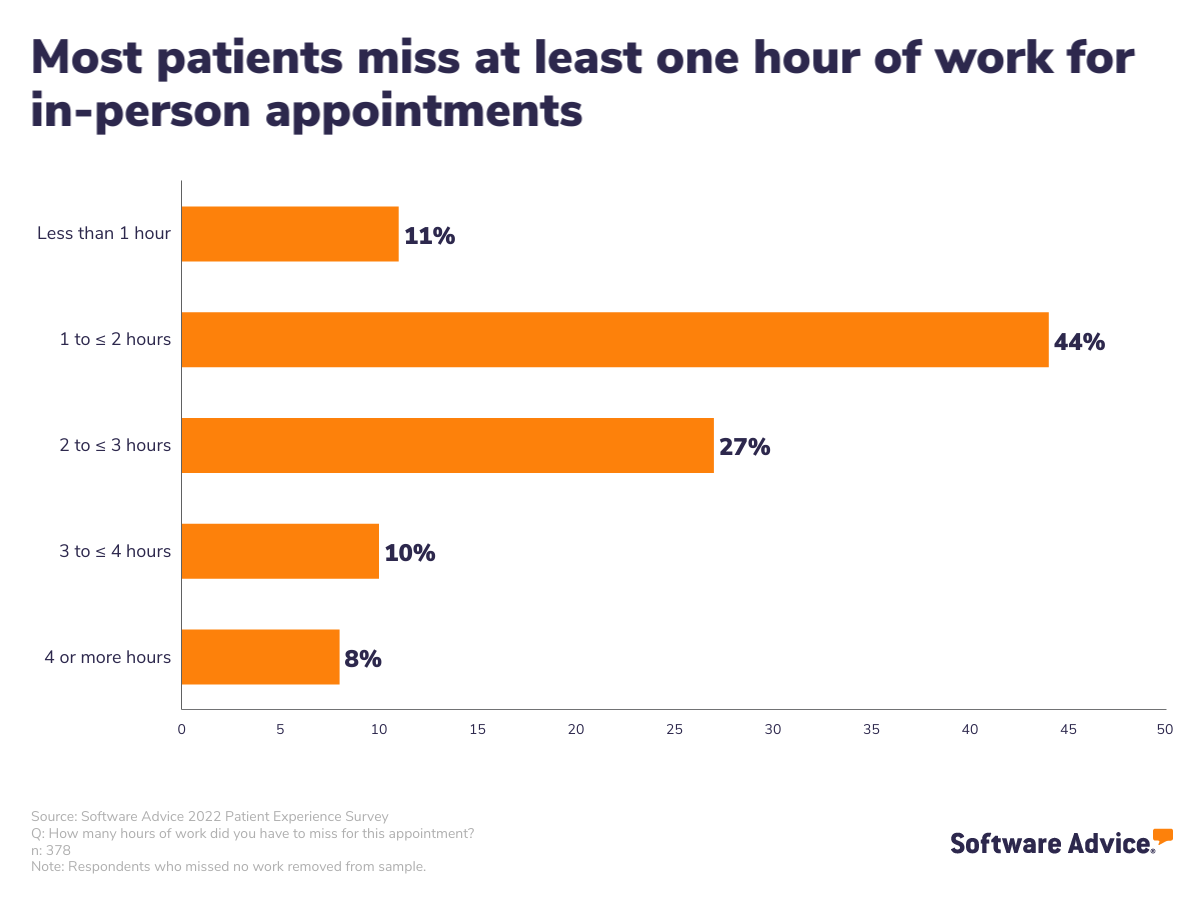
When you consider the amount of time patients spend with providers in the context of how much time they have to take off work for the appointment, it’s understandable why this is such a common complaint.
Fortunately, it’s a relatively easy one to fix.
Technology is the answer to more efficient patient care
If you’re using technology to manage your time and make communication with patients simpler, you’re already a step ahead. In fact, 66% of patients in our survey expect healthcare providers to be using these tools—so if you aren’t adopting technology, you’re disappointing a lot of potential clients.
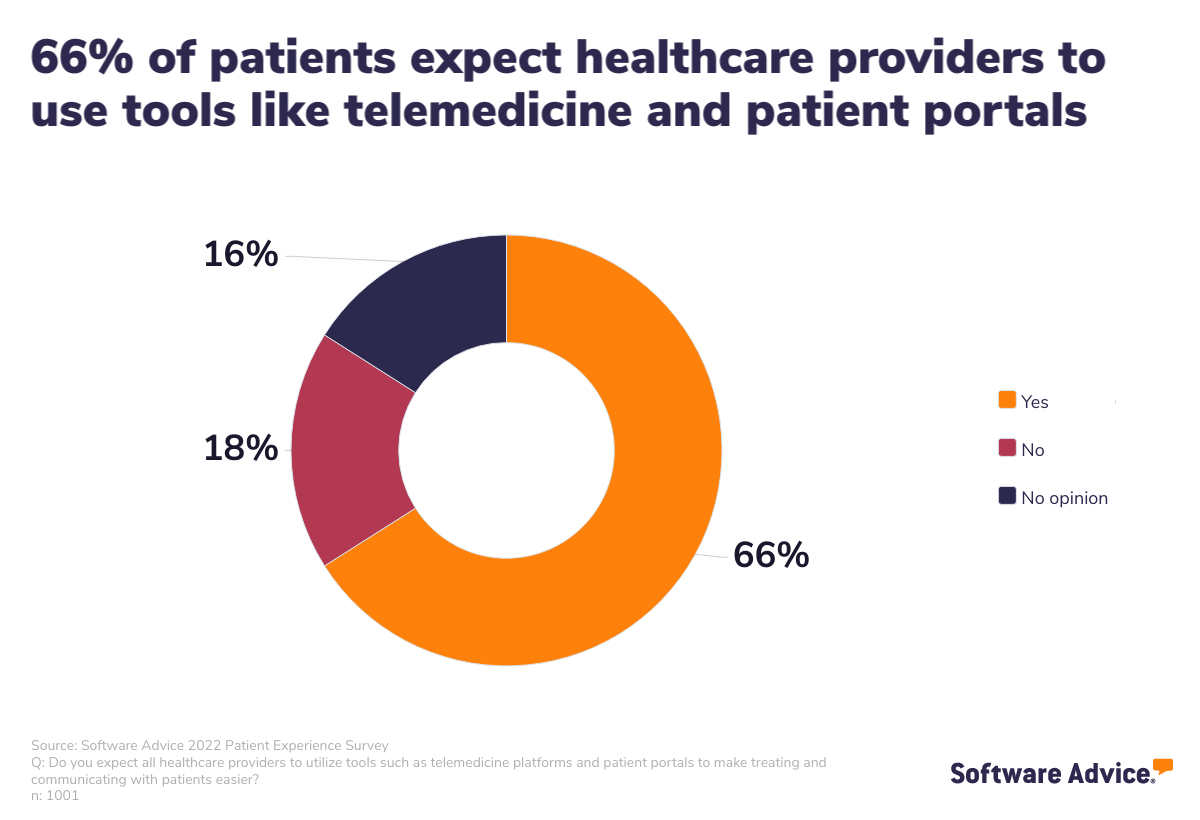
We found two main categories of technology to be the most valuable to patients when it comes to improving their overall experience: Telemedicine and patient portals.
Telemedicine
We screened survey respondents to those who had recently participated in a telemedical appointment to learn how video consultations compare to in-person visits.
The general consensus is that telemedicine is much more convenient for patients.
Though telemedicine did present some pain points for patients, it’s worth noting that while only 21% of patients say they didn't experience any pain points during in-person appointments, that percentage more than doubled to 45% for telemedicine appointments.
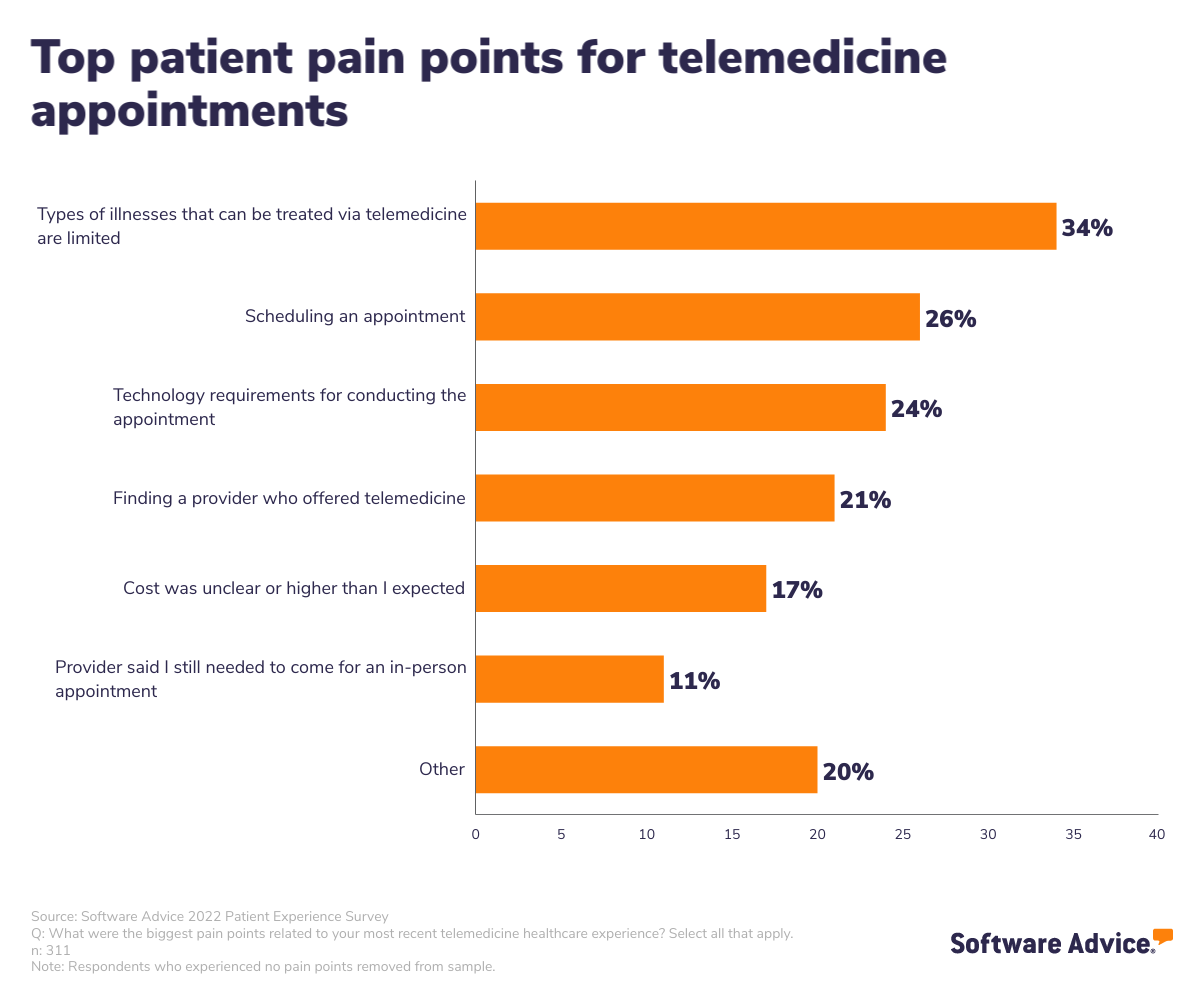
It’s also important to note that the top pain point for telemedicine isn't actually related to the appointment experience, but rather the types of illnesses that can be diagnosed and treated remotely.
If we adjust for patients who use telemedicine to consult about conditions that can be treated remotely, the pain points become much less significant than in-person concerns.
One thing was similar between telemedicine and in-person appointments, however: the amount of time patients spent with providers.
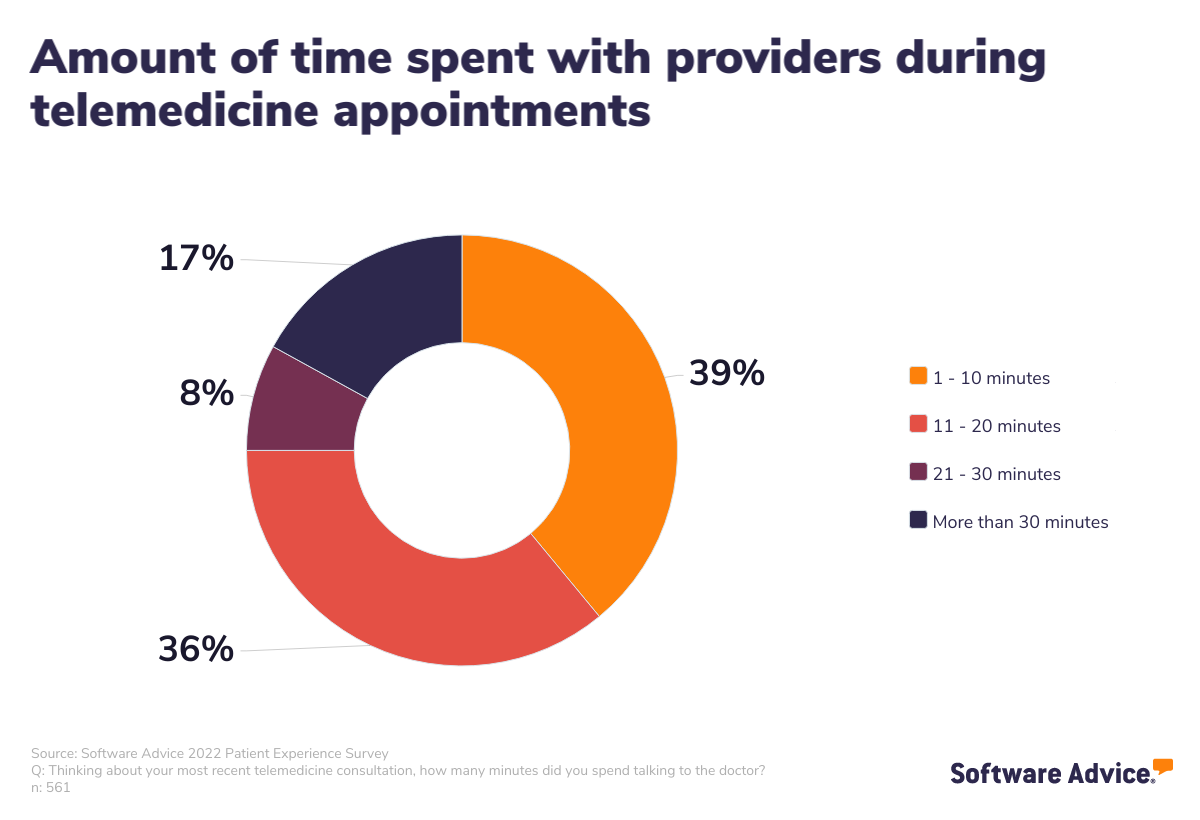
While most patients are still only getting up to 20 minutes of their providers’ time, this actually becomes a positive for telemedicine when you consider that patients can spend significantly less time away from work to attend virtual consultations.
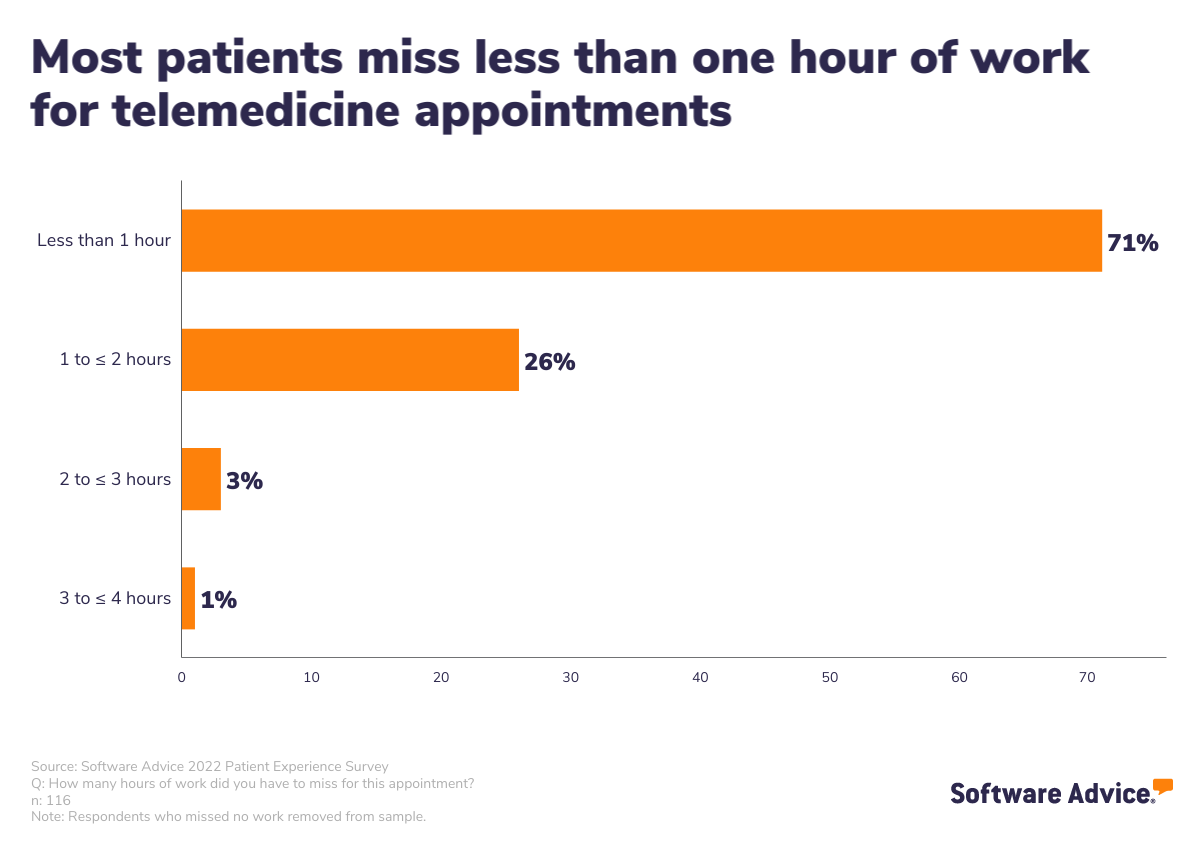
This means that providers who use telemedicine platforms to consult with patients remotely are experiencing several key benefits:
They are able to keep time spent with patients the same or lower than with in-person appointments, making it easier for them to manage their schedule.
Patients are not experiencing the annoyance of wait times or the hassle of taking off work, which improves their impression of the doctors they’re seeing remotely.
The bottom line here is that telemedicine is a fantastic tool for many reasons, not the least of which is the current trend of consummerized medicine.
Patient portal
Another valuable tool that goes a long way to address patient concerns and complaints is the patient portal—a platform that includes a variety of applications to better manage and simplify all communication between patients and their doctors.
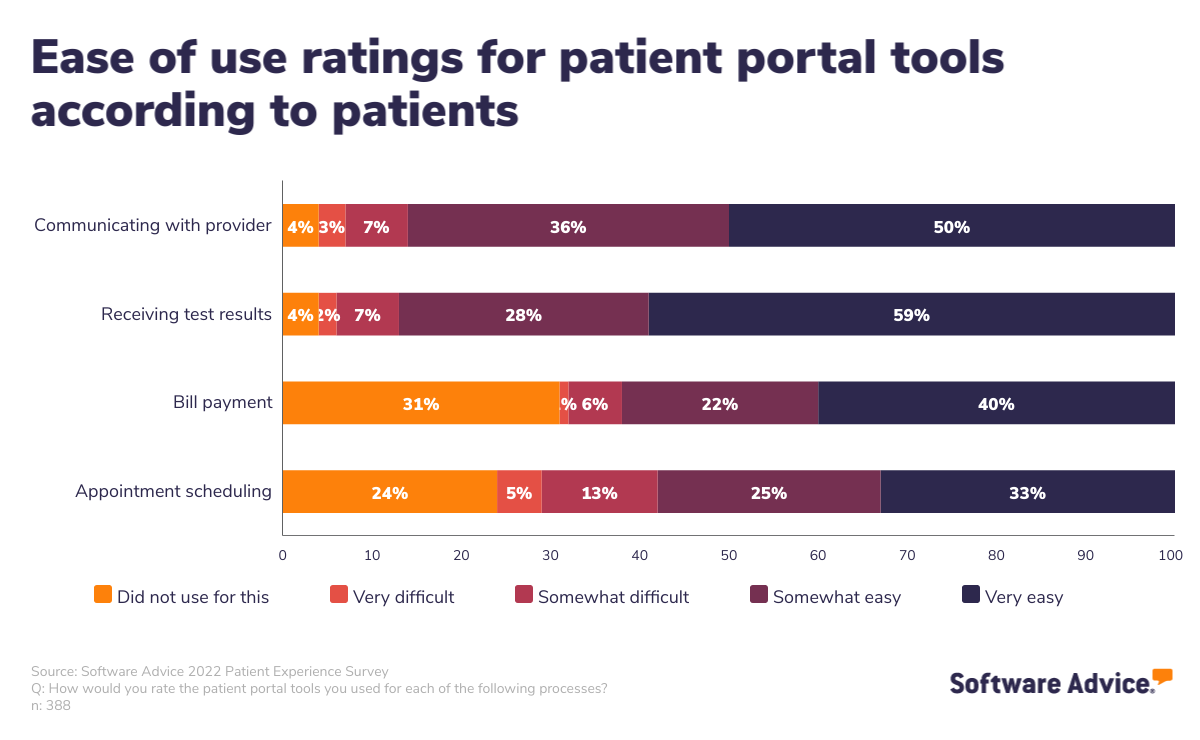
Patients largely find these tools to be easy to use, and—just like telemedicine—one of the biggest benefits for providers is time savings.
Another compelling application of patient portals is their ability to distribute and collect data from patient satisfaction surveys—something else providers should be doing in their quest to improve patient experiences.
Fifty-eight percent of surveyed patients say they have received a satisfaction survey after a medical appointment, but of those respondents only 37% feel their feedback was heard and taken seriously.
Doctors can equip themselves with cutting edge technology to automate as many tasks as possible, they can use tools with phenomenal UI/UX to make patients feel in control of their own healthcare, and they should be doing these things.
But perhaps the most important thing to remember in this world of consummerized medicine is that simply listening to your customers is the best way to make sure they’re happy.
Next steps: Picking the right tech
Now that we understand how valuable telemedicine and patient portals are for expediting the patient experience (without sacrificing quality care), the next step is making sure you’re using the right platforms.
Start by exploring these resources for telemedicine and patient portal software:
Telemedicine resources
Patient portal resources
Once you have an understanding of the features these tools can offer, create a budget and list any specific requirements you have for the software. From there, you can begin researching, vetting, and narrowing your list of vendor options until you land on one that meets all of your needs.
Survey methodology
* Software Advice's 2022 Patient Experience Survey was conducted online in October 2022 among 1,001 respondents in the U.S. Respondents were all adults who had visited a healthcare provider within the past three years.